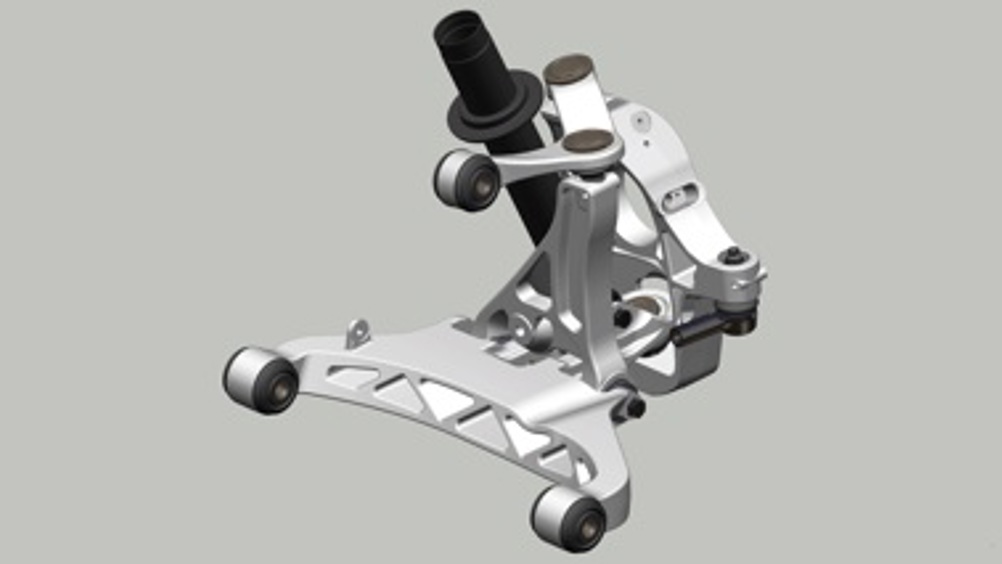Vehicle suspension improves handling and maintains comfort
MIRA has developed new vehicle suspension that is claimed to offer improved handling without compromising comfort.

The suspension has been developed by vehicle dynamicists at MIRA over the past two years and builds on the existing double-wishbone suspension (DWS).
The DWS is most commonly seen in high-performance sports cars — including those made by Lamborghini and Aston Martin — thanks to its ability to provide a low bonnet line and improved handling. However, it has always struggled to achieve the comfort offered by softer suspensions, such as the MacPherson strut suspension.
Ian Willows, a MIRA consultant, told The Engineer: ‘The problem with the existing DWS is that there’s an inherent compromise with its design.’
He explained that there is a trade-off between the longitudinal compliance and the castor compliance of the suspension. The longitudinal compliance allows the wheel to be displaced rearwards if a force is applied in that direction. Meanwhile, the castor compliance relates to the rotational displacement of the steering axis when a braking force is applied.
Register now to continue reading
Thanks for visiting The Engineer. You’ve now reached your monthly limit of news stories. Register for free to unlock unlimited access to all of our news coverage, as well as premium content including opinion, in-depth features and special reports.
Benefits of registering
-
In-depth insights and coverage of key emerging trends
-
Unrestricted access to special reports throughout the year
-
Daily technology news delivered straight to your inbox










UK Enters ‘Golden Age of Nuclear’
Apologies if this is a duplicate post - a glitch appears to have removed the first one: > While I welcome the announcement of this project, I note...